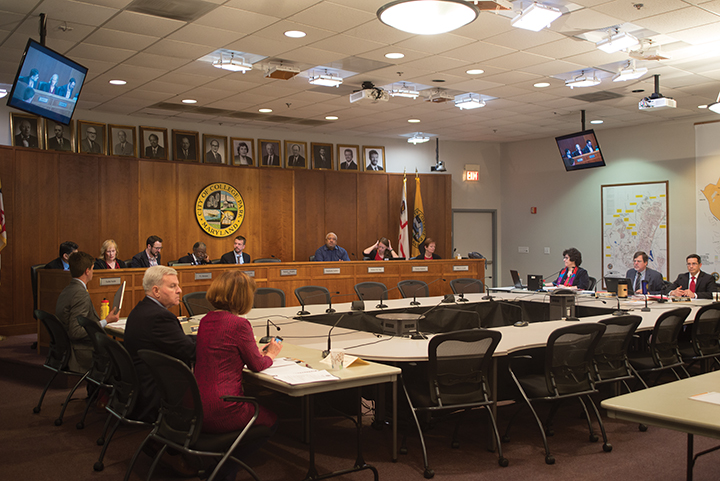The College Park City Council heard a presentation from the city’s water supplier after the Maryland Public Service Commission ordered changes to its rate structure.
The Public Service Commission found that the Washington Suburban Sanitary Commission had a rate structure preferential to low-usage customers. New rate structure options are intended to better align costs, meet the commission’s policy goals and provide a predictable revenue stream to pay for infrastructure improvements.
The orders were given in March after a judge upheld a ruling that the current system discriminates against larger households, The Washington Post reported.
“It’s clear that they need to make some changes based on the order of the [Public Service Commission],” Mayor Patrick Wojahn said before the meeting. “It’s appropriate to continue the use of tiered structure to encourage greater efficiency of water use, and to make sure that we’re not overburdening the infrastructure,” adding that he hopes a tiered option is chosen.
[Read more: College Park Mayor Patrick Wojahn wins re-election]
To correct this, the commission developed five proposed rate structure options — one uniform structure, two three-tier systems and two four-tier systems. These systems were made with its top three priorities in mind — revenue stability, and conservation and demand management and rate stability.
For a typical WSSC household, a three-person residence that uses 55 gallons per person per day, the three-tier options would result in either a $4.61 increase in each quarterly bill, or a $21.30 decrease per quarter. The four-tier options would result in either a $4.83 decrease in each quarterly bill, or an increase of $1.89 per quarter taking the same-sized household into account.
“That’s going to look different depending on how large the household is, how small or how large the household is, and what their per-person consumption — whether that’s below or above — the average,” said Joseph Beach, WSSC’s chief financial officer.
After reviewing the general manager’s recommendations, District 2 Councilman P.J. Brennan questioned why the average homeowner would consider the first third-tier option, given that it would mean a higher cost.
“What is the difference — is there more incentive to conserve under A than B? What would be the argument to do A over B?” Brennan said.
Beach said the options were based on what would provide better revenue stability given WSSC’s infrastructure investment, better price signals for conservation and what’s better for customer affordability. The three-tier option with a $21.30 decrease per quarter would be more affordable for the typical residential family, he said, but the other three-tier option has stronger revenue stability, he said.
The provider currently has a 16-tier rate structure system, which has been in effect since 1992. It’s unique in a couple aspects, particularly the amount of tiers and the fact that it builds upon the highest rate of consumption, Beach said.
“Say your consumption was 100 gallons per day, that would be the third tier down. All 100 gallons would be billed at that $10.38 per 1000 gallons,” Beach said, noting that what they’d like to build to the industry standard, which would be a price that builds at each tier, rather than lumping all the gallons to the same cost.
[Read more: All the College Park City Council’s incumbent candidates were re-elected]
WSSC’s general manager has recommended the two three-tier systems, as well as the first four-tier system, to the commission.
After holding 15 public meetings on the proposed structures since May, WSSC reviewed the input and presented recommendations to commissioners on Nov. 8. On Nov. 15, they plan to pass proposed structures to Montgomery and Prince George’s Counties, whose advice is expected between Nov. 16 and April 16, 2018.
The WSSC will vote to select its new rate structure in June 2018, but the implementation date will depend on which structure is selected.
WSSC could enact the uniform structure in July 2018 with its current billing system, but if it selects an inclining option, it would be put into place in July 2019, when its new billing system could handle the change, Beach said.



